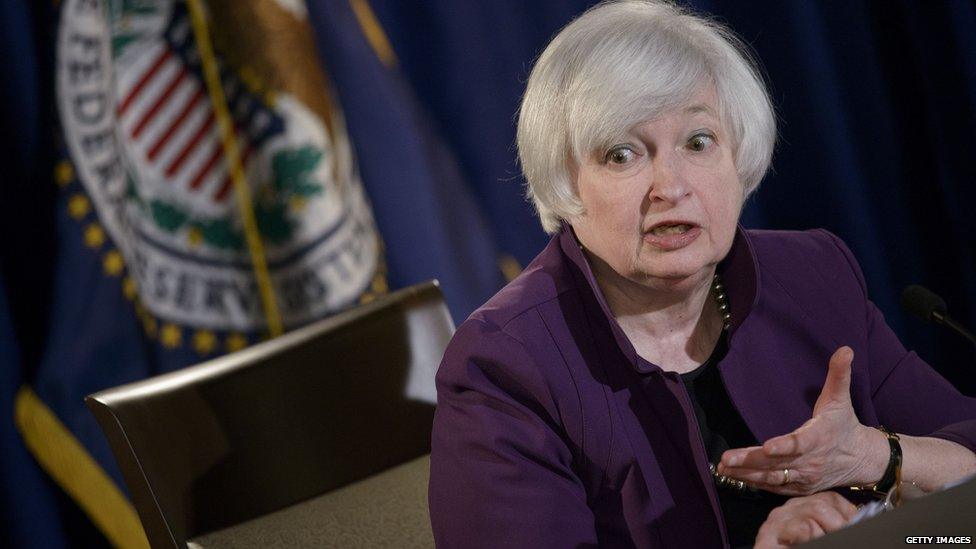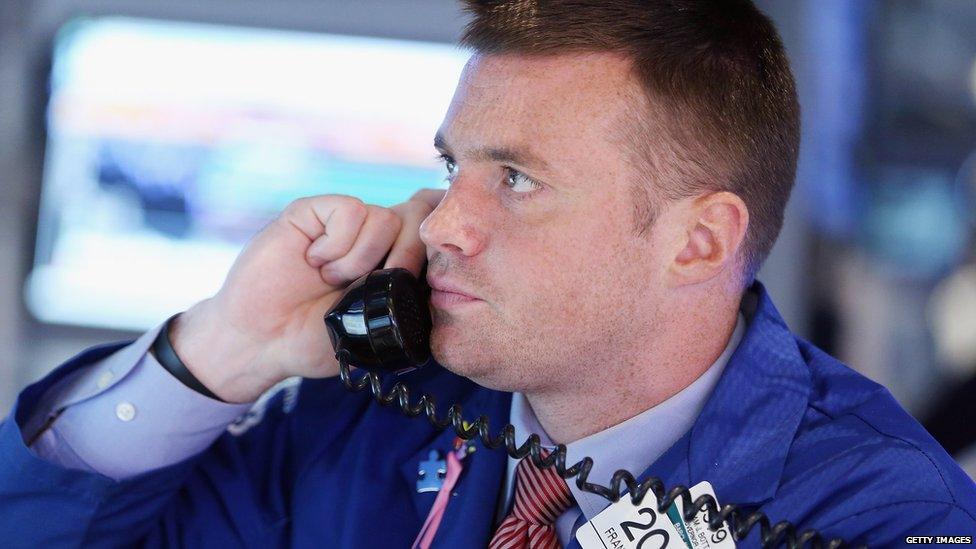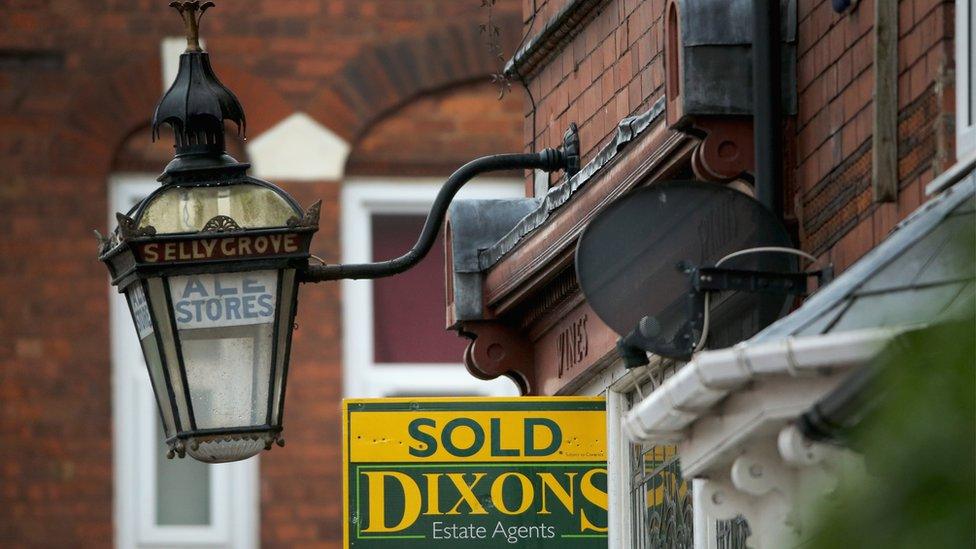Why the Federal Reserve is facing a tricky choice
- Published
- comments

There are no easy choices for central bankers or the Federal Reserve chair Janet Yellen
After a volatile week for global markets, investors' eyes are turning to this weekend's meeting of top central bankers at Jackson Hole in Wyoming. The Federal Reserve's annual symposium is always closely followed - but this one is seen as especially important.
One of the three main questions facing the global economy that I posed this week, was: "When will the Federal Reserve begin to raise interest rates?" This week should provide some more clues.
The worry is that the economic recovery in the US (and the UK) has been driven by ultra-low interest rates which have encouraged companies and households to borrow and helped support asset prices - leave that support in place too long and the Fed risks over-stimulating the economy and will, eventually, need to raise rates by more than it would otherwise to prevent overheating, financial instability and higher inflation.
But withdraw the support too soon (as interest rate doves argue the European and Swedish central banks did) and the Fed will end up having to provide more support later and could snuff out the recovery.
Until a few weeks ago, the markets had expected the first rate rise in almost a decade to come next month. But two rough weeks for global stock markets, further evidence of China's economy slowing and a big fall in commodity prices may now be enough to slow the Fed. The point of "lift off" in interest rates could yet be pushed back again.
Although we are talking about moving interest rates from "exceptionally low" to "only slightly less exceptionally low", this is a crucial decision and one which have as big an impact outside of the United States as within it. The US dollar sits at the centre of the global financial system, the Federal Reserve is the world's most important central bank and its decisions reverberate through the global economy.
The Fed now faces a quandary. US economic data this week (faster-than-expected economic growth and strong orders for durable goods) both point to an economy that could handle higher interest rates - but wobbly markets and a slowing China could both be reasons to wait longer.

When it eventually comes, this will be the first rate rise that many traders have ever seen in their careers. Whilst almost everyone expects rates to rise at some point, and we are after all only discussing a small hike, there are still two potential dangers for the global economy.
The first will depend on the market reaction, specifically the reaction of bond markets (tradable government and corporate debt). For the attention placed on short-term borrowing costs set by the central bank, it's longer term interest rates that really matter for things like mortgages and corporate borrowing. Those rates are ultimately set through the bond market.
In an ideal world as the Federal Reserve raises interest rates, they would like to see a gradual rise in longer term rates at the same sort of pace. The worry is that bond markets have become complacent and overvalued - they are expecting a far slower pace of Fed rate rises than the Fed itself has been signalling.
This has been the case for several years now and hasn't, yet, raised any sort of commotion. But if the Fed starts to hike and bond investors react by assuming that the Fed will actually hike at a faster pace than they had been thinking, then there is a chance that rather than long-term borrowing costs rising gradually, they could spike higher rather quickly. That would have a serious knock-on impact for borrowing rates in the real economy and for asset prices in general.
The Fed is far from unaware of this risk and is trying to mitigate it by clearly explaining its thinking and communicating its actions in advance.
The second risk associated with Fed hiking is the wider global impact. As I wrote earlier this year, the stronger (relative) performance of the US economy and the expectations that interest rates there will rise has driven the dollar higher.

Historically a rising dollar has meant a weaker performance for emerging economy growth and asset prices as global capital moves back toward the US. This is one of the current factors explaining the weaker outlook for the developing world.
The Fed faces a tougher choice than it did three weeks ago. Then, a September rate rise was widely assumed to be highly likely, but today the waters have been muddied.
The fact that a hike is now seen as less likely heightens the risk of making it. A September rate rise now could come as a surprise to the market potentially leading to a bigger fallout in the bond market and a bout of dollar strength.
But whatever the legitimate reasons to delay (slower global growth, a stronger dollar and lower commodity prices all point to less inflationary pressure), any delay now could be seen as the Fed simply trying to support the price of financial assets, which could store up problems for the future.
That's the Fed's real choice now: risk surprising markets or risk being seen as being pushed about by the markets.